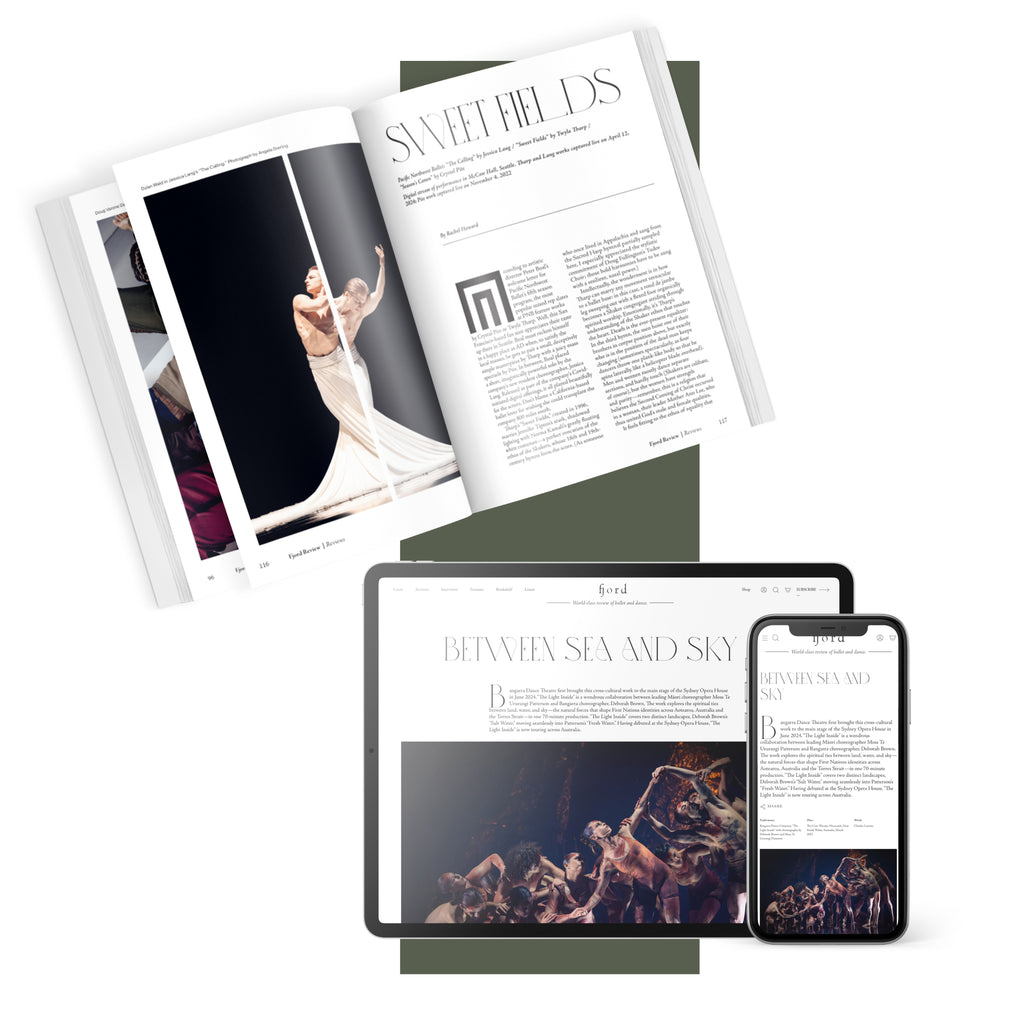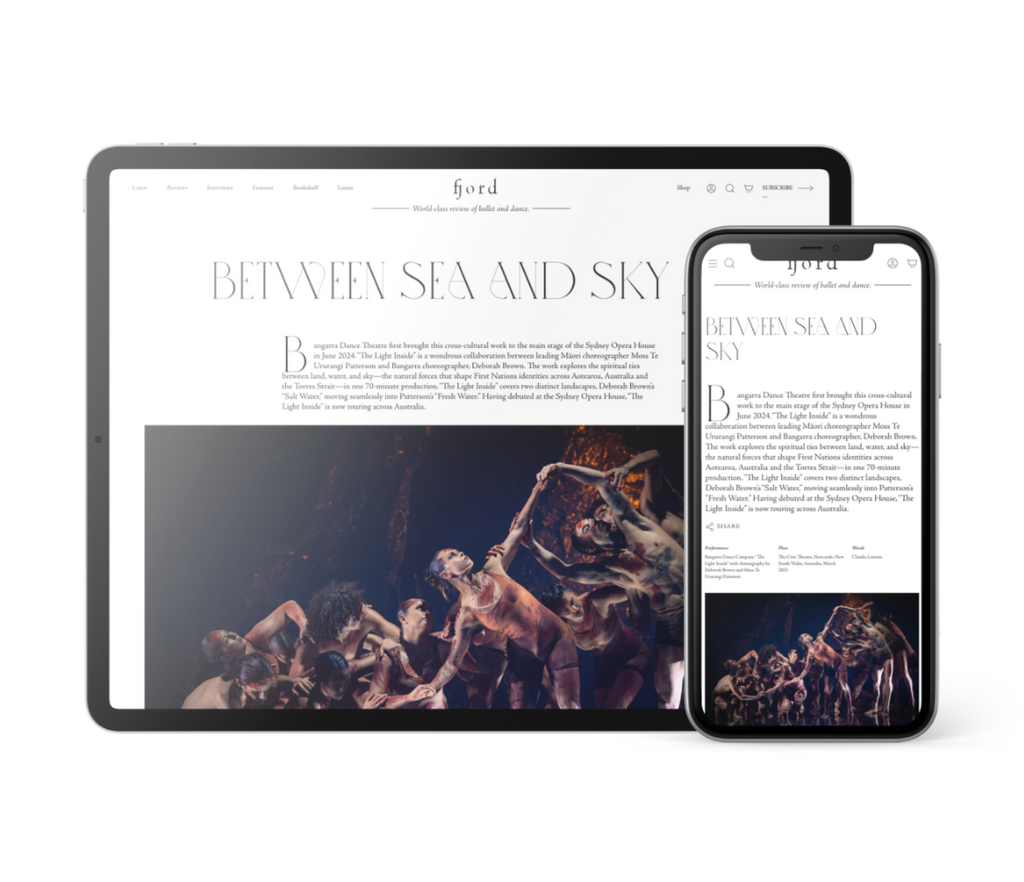But we haven’t even gotten to the big news on this program yet, the brand-new dance: “Slacktide.” It marks Tharp’s return to working with the music of Philip Glass, nearly 40 years after her landmark “In the Upper Room.” (After a slow-motion ensemble opening, the dancers entering as though moving through water, “Slacktide” actually launches with the exquisite Marzia Memoli hoofing it up in bouncing phrases from “In the Upper Room.”) “Slacktide” is not as consistently formally mind-blowing as “In the Upper Room,” to my eyes on a first viewing. But it does feature a mind-blowing part for Reed Tankersley, a frequent Tharp dancer who danced in her 50th anniversary tour a decade ago.
Tankersley is a stocky dancer, his non-balletic lines emphasized in the costume design by Victoria Beck, who dresses him in knee-length soccer shorts while many other dancers wear sleeker full-length pants. Tharp uses him deliciously against type, shooting him as though out of a cannon onto the stage for the slinkiest, most fluttering flute parts in the score. And damn if he isn’t the slinkiest dancer—and the most grooving. In jumps that seem to break the very air and ribcage rolls the turn his body to liquid mercury, he is possessed by the music, so seemingly lost to both himself and the audience that the spectacle is almost disquietingly intimate.
The music is a particularly entrancing Glass score, “Aguas de Amazonia,” a 10-part suite, lightly rearranged here, originally written for a group of musicians in Brazil who created their own original instruments, and inspired by the different rivers in that country feeding the Amazon. (If you can catch one of the tour performances that includes live music from Third Coast Percussion, do, because the flute playing by Constance Volk is unbelievable.) The river/Amazon theme has no connection to “Slacktide.” Instead, in interviews, Tharp has said the dance is about time—how it speeds up, slows down, is dependent on our relativity and perceptions. A “slack tide” is a moment when the water is still, not moving in either direction of a tidal pull. And at the final peak of Tharp’s “Slacktide,” Tankersley throws his body into another dancer’s hands for a lift—and the whole ensemble magically freezes as the rhythms of Glass’s score rush on.
The lighting design by Justin Townsend, a strong glow from the back wall that makes the dancers move in and out of silhouette, is integral. The deeper truth embodied in the whole dance, to me, is in the dialectical tension between temporality and eternity. The reality of time is ever-shifting and contains both. And yet, the brilliance of what Tharp did seems like it could exist in some protected space-time pocket forever. Maybe I just want that to be true.











comments